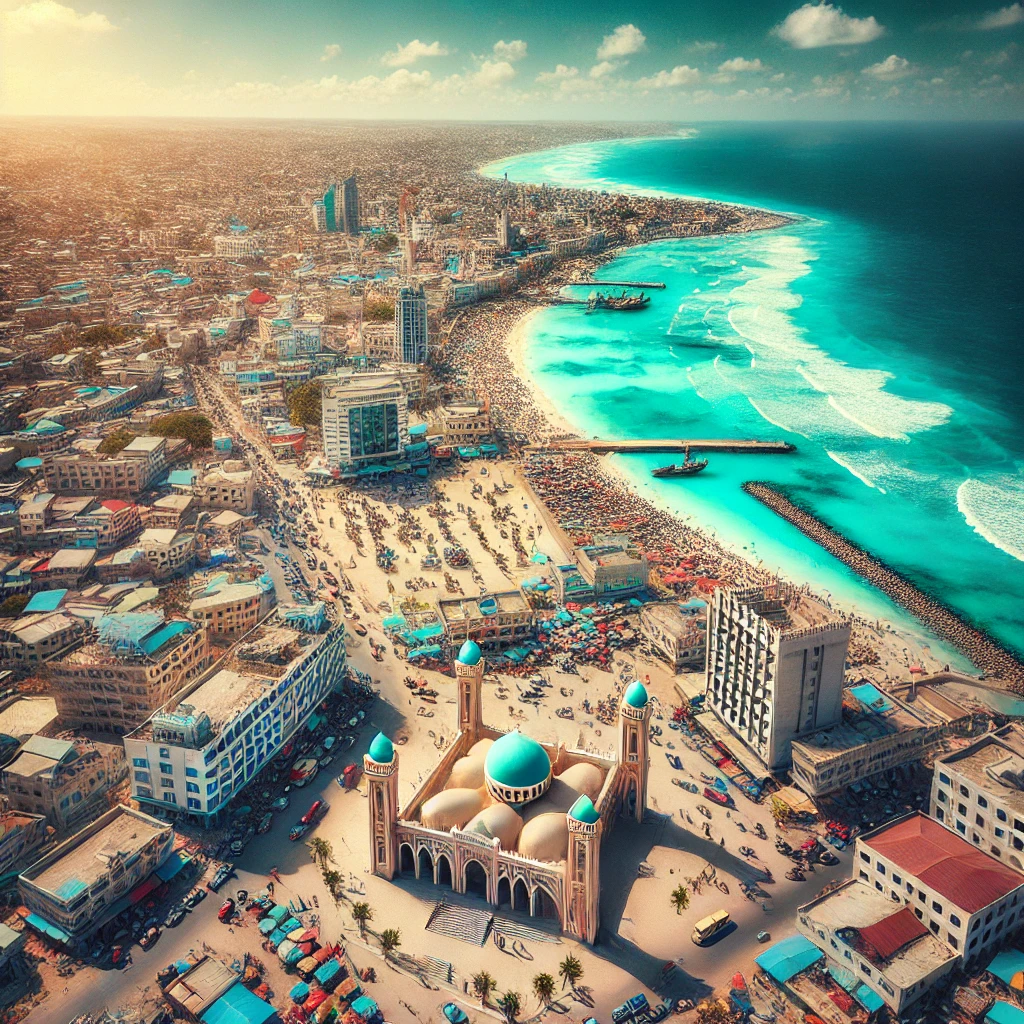The National Museum of Somalia:
Introduction
The National Museum of Somalia, located in Mogadishu, serves as a vital custodian of the country’s rich history, culture, and heritage. This iconic institution is more than just a repository of artifacts; it stands as a beacon of Somali identity, resilience, and pride. Over the decades, the museum has played a pivotal role in preserving Somalia’s historical treasures and showcasing its diverse cultural legacy to both locals and international visitors.
In a country shaped by centuries of trade, migration, and social evolution, the National Museum offers invaluable insights into Somalia’s past and its place in the wider world. Despite challenges such as conflict and neglect, recent efforts to restore and revive the museum underline its enduring importance as a symbol of national unity and cultural pride.
The History of the National Museum of Somalia
The National Museum of Somalia was established in 1933 during the Italian colonial period. Originally housed in a building that served as the Garesa Museum, the institution aimed to highlight the history and culture of Somalia while also reflecting Italian colonial ambitions. The Garesa building itself is a historical artifact, once serving as the residence of the Italian governor during Somalia’s colonial era.
Following Somalia’s independence in 1960, the museum was repurposed to celebrate the nation’s heritage. It became a focal point for the preservation of Somali culture, showcasing everything from archaeological artifacts to traditional art and historical documents.
During its peak, the National Museum of Somalia was a vibrant center of learning, attracting researchers, students, and tourists. However, the outbreak of civil war in the early 1990s brought significant challenges. The museum suffered extensive damage, and many of its collections were lost or looted. For years, the museum stood as a shadow of its former self, reflecting the broader struggles of the nation.
Architecture and Layout
The National Museum of Somalia is housed in a historic building with architectural features that reflect a blend of Italian colonial design and Somali cultural elements. The structure is characterized by high ceilings, arched doorways, and spacious galleries, offering an inviting and functional space for exhibits.
The museum is divided into several sections, each dedicated to different aspects of Somali history and culture. These include:
- Prehistoric Artifacts: Showcasing ancient tools, pottery, and relics from early Somali civilizations.
- Islamic Heritage: Highlighting the influence of Islam on Somali society, with manuscripts, religious artifacts, and architectural models.
- Traditional Art and Textiles: Displaying intricate Somali weavings, ceremonial clothing, and decorative arts that reflect the creativity of Somali artisans.
- Archaeological Discoveries: Featuring items unearthed from ancient Somali cities such as Zeila and Mogadishu, providing a glimpse into the region’s past as a hub of trade and commerce.
Cultural Significance
The National Museum of Somalia holds immense cultural significance as a repository of the nation’s history. It acts as a bridge between the past and present, ensuring that future generations remain connected to their roots. The artifacts and exhibits housed in the museum tell the story of a people who have weathered centuries of change, from the rise of ancient city-states to the struggles for independence and beyond.
The museum also plays a crucial role in fostering national pride and unity. By celebrating the achievements and resilience of Somali culture, it inspires a sense of belonging and identity among the population. For the Somali diaspora, the museum serves as a reminder of their heritage and the enduring legacy of their homeland.
Challenges and Restoration Efforts
Like many cultural institutions in Somalia, the National Museum has faced significant challenges over the years. The civil war in the 1990s led to widespread looting and destruction, leaving the museum in disrepair. Many artifacts were lost or damaged, and the museum’s role as a cultural hub was severely diminished.
In recent years, however, there has been a renewed effort to restore the National Museum of Somalia to its former glory. The Somali government, in collaboration with international partners and local organizations, has launched initiatives to rebuild and rehabilitate the museum. These efforts include restoring the building, cataloging remaining artifacts, and creating new exhibits that reflect the diversity and richness of Somali culture.
One of the most significant steps in the museum’s revival was its reopening in 2019. Although much work remains to be done, the reopening marked a turning point, symbolizing Somalia’s commitment to preserving its cultural heritage despite decades of adversity.
Educational and Tourism Potential
The National Museum of Somalia has immense potential as an educational and tourism hub. For students and researchers, the museum offers a wealth of knowledge about Somali history, art, and culture. Its exhibits provide valuable insights into the nation’s past, encouraging critical reflection and fostering a deeper understanding of Somali identity.
For tourists, the museum offers a unique opportunity to explore the rich tapestry of Somali culture. Visitors can learn about ancient trade networks, discover the artistic traditions of Somali communities, and gain an appreciation for the resilience of the Somali people. With proper investment and development, the National Museum has the potential to become a key attraction, drawing visitors from around the world and boosting Somalia’s cultural tourism industry.
Future Prospects
The future of the National Museum of Somalia is closely tied to the broader efforts to rebuild the country and promote cultural preservation. As Somalia continues to recover from decades of conflict, the museum stands as a beacon of hope and resilience. It serves as a reminder of the nation’s rich heritage and the potential for renewal and growth.
Ongoing restoration efforts aim to transform the museum into a world-class institution that reflects the diversity and vibrancy of Somali culture. Plans include digitizing collections to make them accessible to a global audience, creating interactive exhibits, and hosting cultural events that celebrate Somali traditions.
By investing in the museum, Somalia is not only preserving its past but also building a brighter future. The National Museum has the power to educate, inspire, and unite, making it a vital part of the nation’s cultural landscape.
Conclusion
The National Museum of Somalia is more than just a building—it is a symbol of the country’s resilience, unity, and cultural pride. From its early days as the Garesa Museum to its role as a modern cultural institution, the museum has played a central role in preserving and celebrating Somali heritage.
Despite the challenges it has faced, the National Museum continues to inspire hope and pride among Somalis, both at home and abroad. Its restoration represents a broader commitment to rebuilding the nation and ensuring that future generations remain connected to their rich history.
As Somalia looks to the future, the National Museum will remain a cornerstone of its cultural and historical identity, reminding the world of the enduring strength and resilience of the Somali people.



